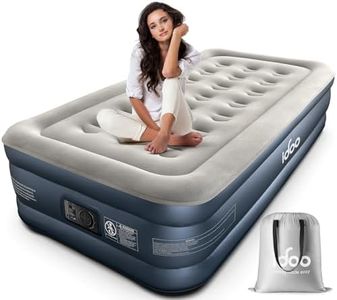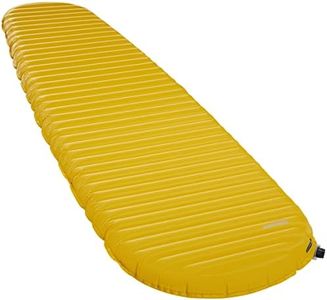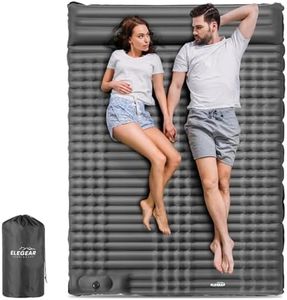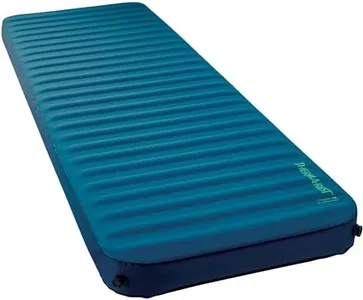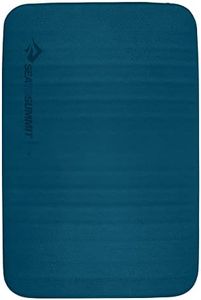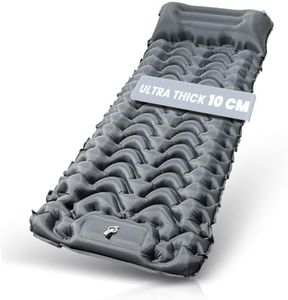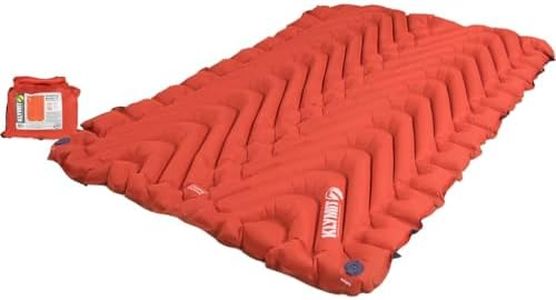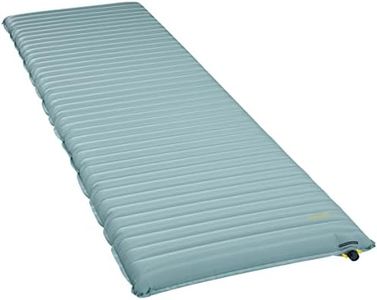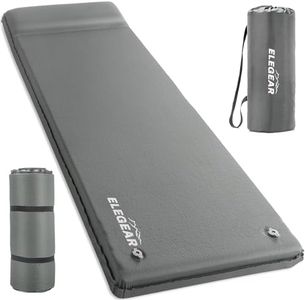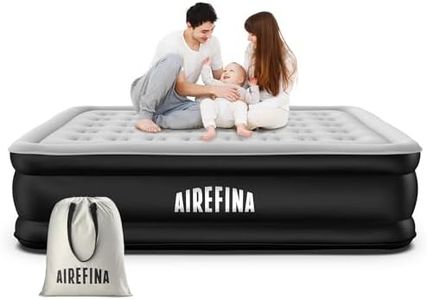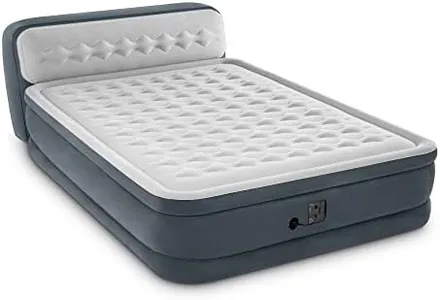We Use CookiesWe use cookies to enhance the security, performance,
functionality and for analytical and promotional activities. By continuing to browse this site you
are agreeing to our privacy policy
10 Best Camping Air Mattresses
From leading brands and best sellers available on the web.By clicking on a link to a third party's website, log data is shared with that third party.
Buying Guide for the Best Camping Air Mattresses
Choosing the right camping air mattress is all about balancing comfort, portability, and durability for the type of camping you plan to do. Before buying, think about where and how you’ll use the mattress—car camping, backpacking, or festival stays all have different needs. Start by considering how much space you have in your tent or vehicle, how much weight you’re comfortable carrying, your typical sleeping temperature, and how important ease of setup and packing is to you. It’s also good to think about how many people will be using the air mattress and whether you need a single or a double model. Paying attention to a few key specifications can help you make the best choice.Size and DimensionsWhen it comes to size and dimensions, this means how long, wide, and tall the mattress is when inflated. A mattress should fit comfortably inside your tent or sleeping area and be suitable for your body size. Single/twin sizes are good for solo campers or smaller tents, while doubles or queens are better for couples or people who want extra space. Thickness, usually measured in inches, tells you how far off the ground you’ll sleep. Thicker mattresses (more than 6 inches) are more comfortable for side sleepers or campers who want extra cushioning, but may be bulkier to carry. Thinner pads are lighter and easier for backpacking. Think about your comfort needs and the space you have available when deciding.
Weight and Packed SizeWeight refers to how heavy the mattress is when packed up, and packed size tells you how much space it takes up in your backpack, car, or storage. Lightweight and compact air mattresses (a few pounds or less with a small packed size) are ideal for backpackers who carry all their gear, while heavier and larger models can work for car camping where you have more space. If you’re traveling on foot, focus on lighter models; if not, you can choose a bigger, cushier mattress without worrying about carrying it far.
Material and DurabilityThe material of an air mattress affects how tough it is and how long it will last. Most camping air mattresses use nylon, polyester, or PVC. Denier or thickness is usually used to describe how rugged the fabric is—the higher the number, the tougher the fabric. If you camp in rocky or rough areas, or plan to use your mattress frequently, go for a higher durability material. For gentle use or fair-weather camping, a lighter material can be fine and more comfortable.
Inflation MethodInflation method tells you how the mattress gets filled with air. Some use built-in foot pumps or hand pumps, others you blow up manually, and some newer ones use battery-powered or rechargeable pumps. Simpler manual inflating is light and reliable but may require more effort, while built-in or battery pumps are easier but add weight and could break or run out of power. Choose based on how much convenience you want versus how much weight or space you can spare, and think about whether you’ll have power or prefer to inflate by hand.
Insulation (R-Value)Insulation, often given as R-value, tells you how well the mattress protects you from the cold ground. A higher R-value gives more warmth and is important for camping in cold conditions. Low R-value mattresses (around 1-2) are fine for warm summer nights, mid-range (about 3-4) work for spring and fall, and higher R-values (above 5) are best for winter. Pick a value based on when and where you’ll camp: if you get cold easily or will camp in colder seasons, a higher R-value helps you stay comfortable.
Comfort and SupportComfort and support refers to how the mattress feels to sleep on, which can be affected by its internal construction—like air coils or chambers—and flocked (velvet-like) surfaces. Mattresses with more air chambers are usually more stable and comfortable, keeping you from rolling off or disturbing a partner. Flocked tops can feel softer and help keep your sleeping bag in place. If you’re a light sleeper or need extra support, look for mattresses with more structure inside or a textured top.

